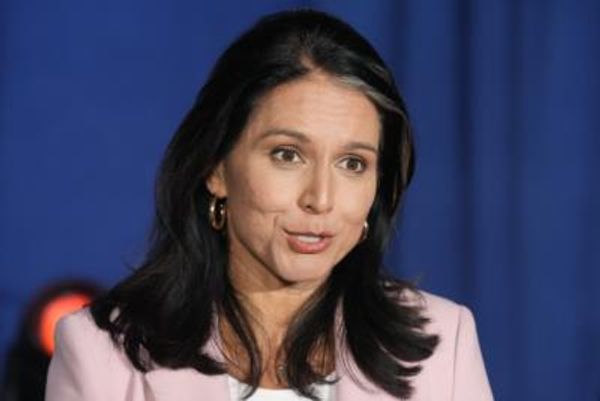
A large number of Gen Z investors are forgoing the traditional analytical approach to markets and instead turning to guidance from a multitude of "finfluencers" found on popular social media platforms. It’s a trend that carries numerous significant risks, creating a potential wild west atmosphere for investors on sites such as YouTube, TikTok and Instagram. On these platforms, the transparency and ethical standards mandated in traditional financial services companies are often absent.
Dismissing all market guidance shared on social media as illegitimate would be the simplest approach, but likely not the best one. Some influencers indeed provide valuable insights and follow ethical principles. But others may have hidden agendas, aiming to profit at the expense of less seasoned investors by exploiting their inexperience through biased or self-serving advice.
This raises a challenging question: How can we monitor and assess the credibility of financial guidance on social forums? And can we consider the possibility of restricting dishonest operators without infringing upon our fundamental First Amendment rights?
The good, the bad and the ugly of finfluencers
Social media has provided a platform for individuals offering financial guidance on a range of topics, from saving and cryptocurrency to real estate and get-rich-quick schemes. The growth of such sites gained momentum during the pandemic: Consumers had cash coming in with many fewer places to spend it, as well as time on their hands that led them to social media platforms.
There they’d often encounter tales of incredible wealth and investing success from these new and unknown social media creators. Despite the risks that advice from the more dubious finfluencers posed, uninformed investors proved to be fairly easy prey for the more unscrupulous finfluencers.
Many of their pronouncements bear some resemblance to "no money down" real estate promoters whose infomercials once flooded late-night television. The messages pledged wealth accumulation without cash, using simple systems that required no experience or education, and all in one's spare time between meetings.
How many people are relying on social media
The impact of the new social media advisers cannot be overlooked, especially among younger and often novice investors. Research conducted by the FINRA Investor Education Foundation and CFA Institute (2023) revealed that among Generation Z investors (born from 1997 to 2004), 48% in the United States, 53% in Canada, 44% in the United Kingdom and 41% in China use social media as a learning tool for investing.
Furthermore, the same study found that 37% of Gen Z investors in the United States, 30% in Canada, 38% in the United Kingdom and 51% in China consider social media influencers to be a significant factor in their decision to start investing.
Similar results were evident in the U.K., where latching onto finfluencers is increasingly common. Nearly two-thirds — 62% — of 18- to 29-year-olds follow social media financial influencers, according to McCann Relationship Marketing. Some 74% said they trusted the influencers’ advice, according to the Financial Times.
Other deceptive and harmful practices were observed among some finfluencers, including inadequate disclosure of conflicts of interest, exemplified by instances where individuals promote financial products or services while having personal stakes in related businesses; endorsement of potentially detrimental investment strategies, such as promoting so-called “match betting,” without addressing associated risks or the need for expertise; and framing investing as a means to quick wealth accumulation, while minimizing the associated risks.
Some ways social media gets it right
Not all social media investment advice is harmful, though. On a positive note, certain finfluencers demonstrate commendable practices by offering crucial advice to safeguard consumers, such as advocating for prioritizing debt repayment and building emergency funds before investing; emphasizing the significance of informed financial decision-making through education and research; and employing engaging content formats, such as animation and visuals.
But the surge of finfluencers across widely used social media platforms has created the need for a blend of self-regulation and official oversight. This mirrors the approach taken in the U.K., where the Financial Conduct Authority issued guidance urging firms to prevent the activities of unscrupulous operators.
Protecting investors this way requires active involvement from three key sectors. In a perfect world:
- Regulators: Would engage with finfluencers, emphasizing the importance of clear and pertinent disclosures. They should maintain records and publicize complaints regarding unethical operators.
- Social media platforms: Would mandate and oversee complete disclosures by influencers.
- Investment companies: Would offer compliance training to their influencers and scrutinize content to ensure it adheres to regulations.
Three questions investors must ask to protect themselves
Of course, we don’t live in a perfect world. So, until regulators, social media platforms and investment companies catch up with the need for protecting consumers, we’ll all have to work to protect ourselves. How? When engaging with a finfluencer, prospective investors should ask themselves three fundamental questions:
- Motivations: Are there any financial incentives behind the creation of this content? Is the individual transparent about such motives?
- Qualifications: Does the individual offer any credentials or background information to support their expertise on the subject? Can this information be authenticated?
- Consistency: Does the provided information align with the latest data when compared with other reputable sources?
Finfluencers can serve as valuable educational resources in today's investment landscape, offering constructive insights. But it's crucial to note that this realm lacks regulation in many jurisdictions. And even if regulation is implemented in one region, the global nature of the internet makes it a concern worldwide.
A rapidly changing financial social media information landscape means that finfluencers aren’t going away. Regulators and social platform operators should take steps to address the risks as well. And finally, users should educate themselves financially and weigh the advantages and drawbacks of following these online sources.







